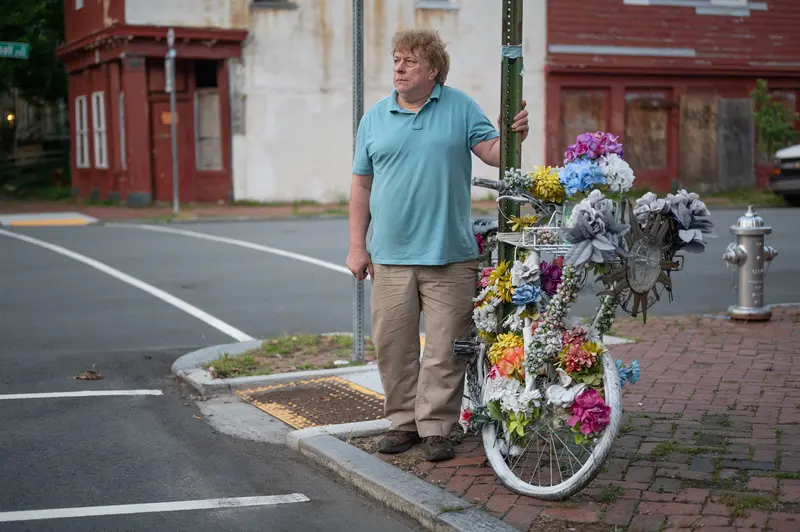ProPublica is a nonprofit newsroom that investigates abuses of power. Sign up to receive our biggest stories as soon as they’re published.
“America’s Dangerous Trucks” is part of a collaborative investigation from FRONTLINE and ProPublica. The documentary premiered on June 13, 2023, and is available to stream in the PBS App and on FRONTLINE’s website.
In 2017, researchers at the U.S. Department of Transportation embarked on a project aimed at making America’s roads less dangerous.
They were concerned over the rising number of pedestrians and cyclists killed in collisions with trucks, which claim the lives of several hundred people every year.
The research team decided to focus on a safety device called a side guard, which is designed to reduce the hazards posed by large commercial trucks.
Made of plastic, aluminum or steel, the guards hang between the truck’s front and rear wheels, preventing pedestrians and cyclists from tumbling beneath the vehicles and getting crushed. The guards are required on trucks in dozens of countries, but they aren’t in wide use in the U.S.
When the researchers drafted their report, they included a key suggestion: The DOT should craft federal regulations requiring side guards.
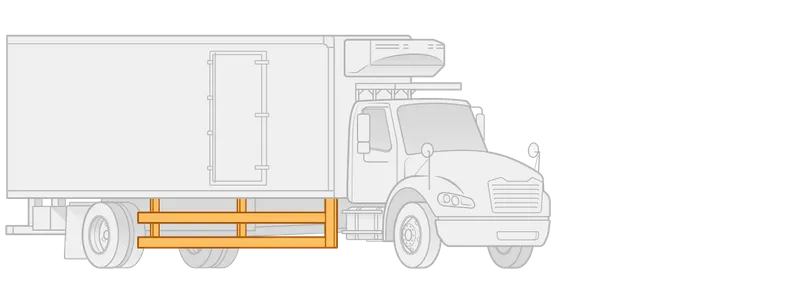
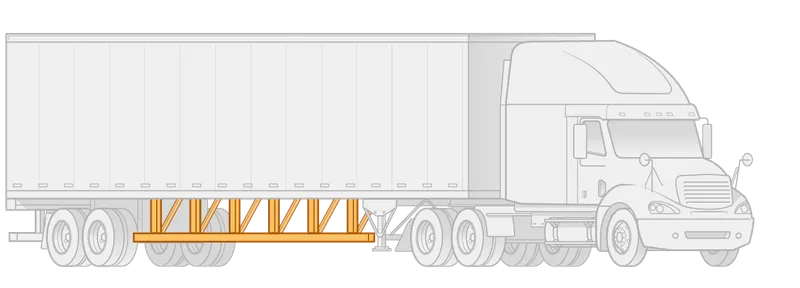
But that recommendation generated intense resistance, both internally, from department officials who challenged their findings, and externally, from trucking industry lobbyists.
Over the span of at least six months, DOT officials repeatedly discussed the ongoing research with representatives of the nation’s largest trade group for trucking companies, the American Trucking Associations. And the ATA repeatedly pressured them to alter the report.
After meeting with the ATA in December 2018, the department supervisor overseeing the project had a very direct message for the researchers. “PLEASE delete any mention of a recommendation to develop … any regulation,” he wrote in an email. “An industry standard is acceptable, but no mention of ‘regulation.’”
The industry objections resulted in a remarkable concession from the department: It allowed trucking company lobbyists to review the researchers’ preliminary report and provide comments on it.
By the time of its release in 2020, the report had been dramatically rewritten, stripped of its key conclusions — including the need to federally mandate side guards — and cut down by nearly 70 pages.
ProPublica and FRONTLINE used interviews, agency emails, meeting notes, copies of drafts and other documents to reconstruct how the report was transformed. The ATA’s ability to secretly shape government research highlights the cozy relationship between the federal officials tasked with keeping our roads safe and the trucking companies they oversee.
Quon Kwan was the DOT supervisor who oversaw the project. In an interview, he told ProPublica and FRONTLINE he regretted his role in watering down the researchers’ report. He said the department’s deference to the trucking industry ultimately contributed to his retirement in 2019.
“The red tape and politics got so bad that I couldn’t do my dedicated mission work,” Kwan said. “When your management tells you to jump, the expected response is, ‘How high?’”
On June 13, ProPublica and FRONTLINE detailed the industry’s fight against a different, heavier side guard — one designed to prevent cars and other passenger vehicles from getting wedged beneath large commercial trucks during roadway collisions. Federal regulators have been aware of these deadly incidents, called underride crashes, for decades but have taken few measures to stop them.
In a statement, the DOT said its officials had thoroughly reviewed the researchers’ report on the lighter side guards for pedestrians and cyclists, which are also known as lateral protective devices.
“Based on the lack of data to support a regulation on lateral protective devices, NHTSA suggested that the report not include a recommendation to require these devices on trucks and trailers,” said the statement, referring to the National Highway Traffic Safety Administration, the DOT agency that sets the safety standards for all cars and trucks on American roads.
Regarding the question of whether the ATA had exerted pressure to change the researchers’ report, the DOT said, “The report was issued based on the best data and research available at the time. Outside influence was not a contributing factor.”
Dan Horvath, the ATA’s vice president of safety policy, acknowledged that the group discussed side guards with the department. “ATA spends a great deal of time interacting with our regulators, including soliciting updates about their activities, providing feedback on research and potential rules so we can educate our members,” said Horvath in an emailed statement.
He did not respond to a direct question about the ATA’s role in revising the report.
The DOT’s Volpe Center, where the researchers who produced the report are based, did not directly respond to requests for comment.
As the report was going through its long and painful gestation, 20-year-old Robyn Hightman, who used they/them pronouns, was cycling 400 miles from Charlottesville, Virginia, to New York City. They’d won the attention of a couple of professional bike teams there and were leaving college to go pro. Hightman got a job as a bicycle messenger to pay bills.
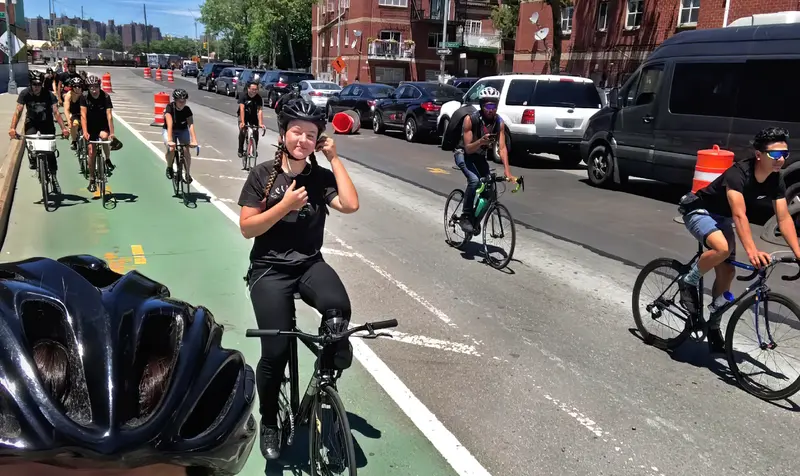
On June 24, 2019, their second day on the job, Hightman was making their first delivery, just a short ride from the Empire State Building. As they pedaled north in the right lane on Sixth Avenue, a parked cab merged into traffic. According to legal filings, Hightman swerved left, but was sandwiched between the taxi and a truck that was in the next lane. Hightman fell beneath the truck and was killed.
Four years later, Hightman’s father is still pushing for side guard regulations that he believes could save families from suffering as he has. But Jay Hightman said he was surprised to find he wasn’t just fighting the trucking industry, but also the federal government, which has appeared impervious to the pleas of victims’ families.
“Those with the biggest voice lobby against us because it’s too expensive to change the status quo,” he said. “But that’s not a responsible or reasonable way for our government to solve this real issue of traffic violence in our country. Robyn was crushed by the rear wheels of the truck. If there had been a sufficient side guard, she probably would be alive today.”
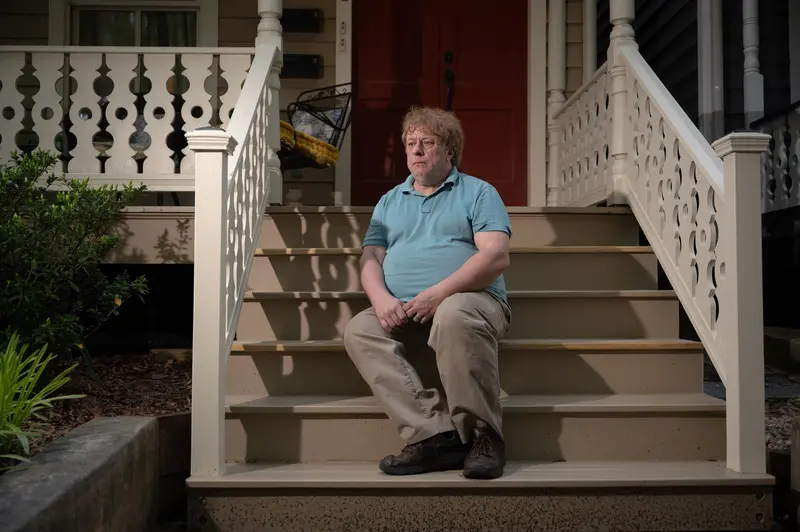
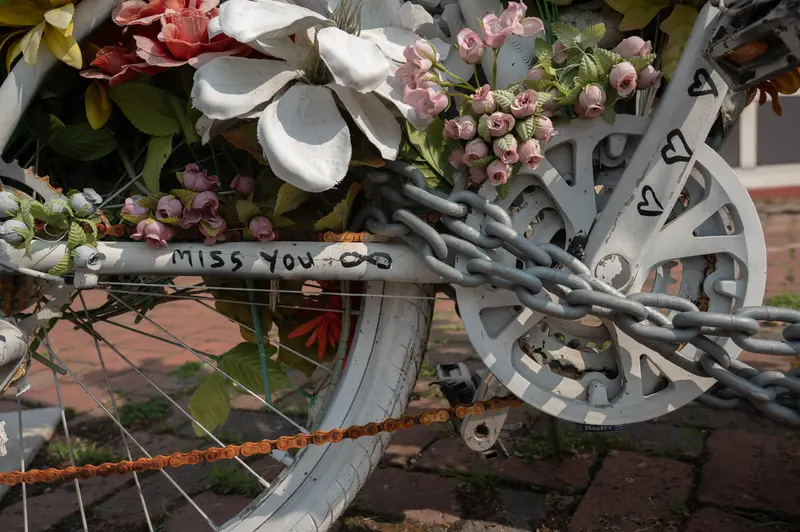
A pair of tragedies in Portland, Oregon, sparked interest in side guards there.
In 2007, two cyclists died in separate crashes involving heavy trucks — one was killed by a cement mixing truck, the other by a garbage truck. The deaths prompted the city to launch a pilot program, equipping about a dozen municipal trucks with lightweight side guards.
Cities across the country began to take action, with New York, Chicago, Boston and Washington, D.C., passing ordinances. The new laws generally required the installation of the safety devices on city-owned trucks or heavy vehicles under contract with the city, such as trash trucks.
In 2017, the DOT researchers, based at the Volpe Center in Cambridge, Massachusetts, began studying side guards. The goal, according to a DOT document, was “to examine the safety benefits, costs, and feasibility” of installing the guards on more trucks across the country. The researchers aimed to “develop actionable industry and policy recommendations” that would benefit pedestrians, cyclists and other people who are especially vulnerable in collisions with trucks.
The research team — which included engineers, economists and urban planners — took a look at the global picture and began gathering information.
Dozens of countries have side guard requirements meant to protect pedestrians and cyclists. Japan first mandated them in 1979. In 1986, the United Kingdom did too. Two years later, the United Nations adopted an international side guard standard that was ratified by 43 countries and the European Union. China, Peru, Brazil and Australia have all passed regulations in the decades since.
The DOT researchers dug into 11 studies that have been done on the effectiveness of side guards in preventing deaths or injuries. The “majority of these presented evidence that side guards are effective,” wrote the researchers in the draft report.
For example, after the U.K. adopted side guard requirements, researchers observed a significant drop in the percentage of fatalities caused by collisions between cyclists and trucks traveling in the same direction, according to a 2010 study by the British nonprofit Transport Research Laboratory.
Eventually, the team made several suggestions. Among them: The DOT should work with the industry to write standards for side guards and the department should consider mandating them on heavy trucks.
In July 2018, Kwan met over video with leaders of the trucking industry gathered at the ATA’s Washington, D.C., headquarters. He told them that researchers were considering recommending side guard regulations.
The news did not go over well with the ATA, which represents America’s largest haulers, including major companies like UPS, Amazon and FedEx, which operate a mix of smaller delivery trucks and massive 18-wheelers.
After the meeting, Kwan emailed the team. “We had some heated feedback from ATA,” he wrote. “ATA was wondering how we are going to word our recommendations in the final report. They are extremely concerned about any recommendation for side guards on over-the-road, long-haul trucks that do not spend much time in the city.”
The fleet owners, Kwan noted in his email, “are very concerned about their cost, and they question the safety benefits of side guards on such trucks. They raised the issue that pedestrians and cyclists have no business being on highways,” where those trucks do most of their driving.
The feedback wasn’t entirely negative, according to Kwan. “On the other hand, they can see the need for side guards on trucks that spend most of their time in the city on city streets.”
Still, ATA leaders were concerned about any recommendations the DOT might make on side guards. They argued that such suggestions from the government might be used as a “weapon” in lawsuits filed against trucking companies.
Kwan was conciliatory, promising the group that “we would allow them to review a draft of the final report before publication.”
Martin Walker advised Kwan and the researchers on the side guard report in his role as chief of research at the Federal Motor Carrier Safety Administration, the DOT agency that licenses and monitors trucking companies.
“The industry holds a lot of sway on what rules get made, and they all hate the idea of additional rules,” said Walker, who retired in 2019. “Unfortunately, the public doesn’t have much impact on what DOT does. But there’s a very close relationship with industry, there’s no doubt about that.”
In the months after the July meeting, the ATA continued to try to influence the researchers’ conclusions.
DOT emails show that Kwan continued to chat with lobbyists about the report. That fall, he reiterated his offer to allow them to provide input on the draft report.
“As I promised, ATA will be given a chance to review and provide comments on the draft,” Kwan wrote to Ross Froat, then an executive with the ATA, on Nov. 13, 2018.
Froat wanted to know if the ATA’s input would be made public. “Will these be private comments?” he asked.
Kwan reassured him. “The public will not see your comments,” Kwan’s email promised.
On the morning of Dec. 19, 2018, three ATA representatives joined a conference call with Kwan and another DOT official to discuss the group’s suggestions on the report.
During the call, the ATA described side guards as “band-aid” solutions when there’s “less burdensome technology available,” such as electronic sensors that can keep a truck from making a dangerous lane change, according to meeting notes obtained by ProPublica and FRONTLINE. The lobbyists also noted that trucking companies “already spend $10 billion on safety technology” each year.
Kwan reassured the industry. He told them the transportation department “was not planning to regulate,” meeting notes show.
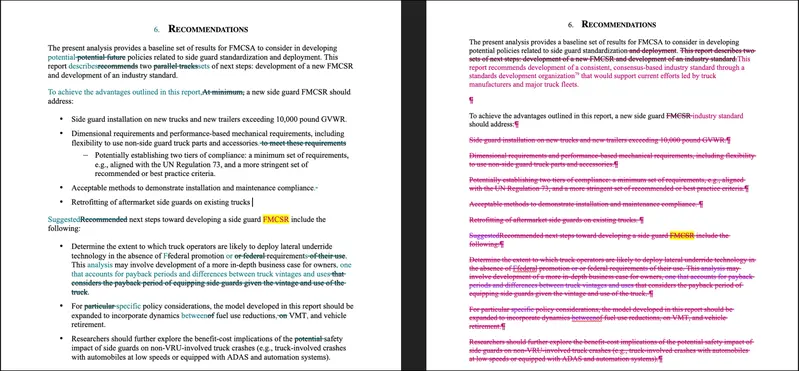
After the December meeting, Kwan sent his message urging the researchers to delete any mention of new regulations.
He ended with a plea: “My office director is emphatic about this.” Kwan’s boss was Steven Smith, who was then a director at the FMCSA, the trucking regulator. Smith did not respond to a request for comment.
Kwan told ProPublica and FRONTLINE that he’d never been asked to offer such deference to industry in his two decades of working for the department. “Normally we don’t give ATA an opportunity to review and provide comments on any of our reports,” he said.
The researchers also faced opposition from within the DOT.
Shashi Kuppa, a career official with NHTSA, became heavily involved in rewriting the report. Internal documents show that she removed key language from the final document, arguing that side guards would cost too much and would not save many lives.
Kuppa and other NHTSA officials reviewed the draft report and challenged the researchers’ conclusions. Kuppa and her colleagues believed installing the guards would cost $600 to $4,500 for each vehicle and would save a maximum of 18 lives annually.
She concluded the expense was not worth it, given the low number of lives saved.
The Volpe Center report was “bogus” and based on third-party research, she told ProPublica and FRONTLINE.
But the DOT researchers saw it quite differently. They responded with their own analysis.
DOT data doesn’t track how many people are killed by falling beneath large trucks. But the researchers examined the available data to come up with some estimates. They found that about 125 pedestrians and cyclists die each year in crashes in which side guards would be relevant. By their calculations, side guards had the potential to save the lives of up to 52 of those people, far more than Kuppa had estimated, according to DOT documents reviewed by ProPublica and FRONTLINE.
Looking at data from several U.S. side guard manufacturers, the researchers concluded the guards would cost $440 to $1,850 per truck, well below the top end of the range given by Kuppa and her colleagues.
In May 2020, the DOT published its final version of the report. It was 66 pages, about half the length of the draft. And it contained no recommendations at all — none directed toward the trucking industry and none aimed at federal regulators. It bore little resemblance to the researchers’ earlier work.
One traffic safety advocate said the report confirmed his suspicions about the relationship between the DOT and industry.
“Crash victims and survivors have long felt that the Department of Transportation is overly deferential to the interests of industry relative to improving safety outcomes,” said Zach Cahalan, executive director of the Truck Safety Coalition. “Truck safety outcomes have never been worse and we need DOT to do everything in its power to reduce truck crash deaths and injuries.”
Kuppa, who is still with NHTSA, downplayed her role in revising the research. In an interview, she described herself as a “worker bee” who is “very passionate” about road safety.
“I feel bad for the cities that have made legal requirements for side guards,” she said, arguing that most pedestrians are killed in accidents involving the front of cars and pickups, not the sides of large trucks. She said NHTSA had “limited resources” and is pursuing more cost-effective solutions to prevent pedestrians and cyclists from being injured or killed.
“I do not have a relationship with anyone at the ATA,” Kuppa said.
In a statement, the DOT said Kuppa “never spoke to anyone from the trucking industry about the report” or about the decision to eliminate the researchers’ recommendation for a side guard regulation.
By 2020, NHTSA’s top official had gotten involved with the side guard issue.
The Volpe Center maintained a webpage with data about pedestrian and cyclist fatalities, a list of side guard vendors and cities where devices were being used.
But the page was taken offline at the direction of James Owens, then NHTSA’s acting administrator, an appointee of President Donald Trump.
In an email dated Jan. 24, 2020, a Volpe researcher wrote to staff, misspelling Owens’ last name: “James Owen called regarding our side guard web page which he wants taken down.” The reason? An activist named Marianne Karth was “citing that website to pressure NHTSA to take some regulatory action on the matter,” the email said.
The page was pulled down within weeks, and it remained down for the duration of the Trump administration, one source said. Volpe has since put the information back online. Owens, who left government in 2021, did not respond to a request for comment.
Stephen Bingham is disgusted by all of this.
In 2009, Bingham’s daughter, Sylvia Bingham, 22, was cycling to her job at a nonprofit organization in Cleveland that helps women find jobs in the construction and energy fields. It was her first job since graduating college.
But she didn’t make it to the office. She was killed on her commute.
According to court records, Sylvia Bingham was biking toward a four-way intersection. Next to her was a box truck headed the same direction. When the truck driver didn’t signal a turn, she pedaled forward. The driver swung right, striking her. The impact forced her under the vehicle, smashing her skull, ribs, abdomen and pelvis.
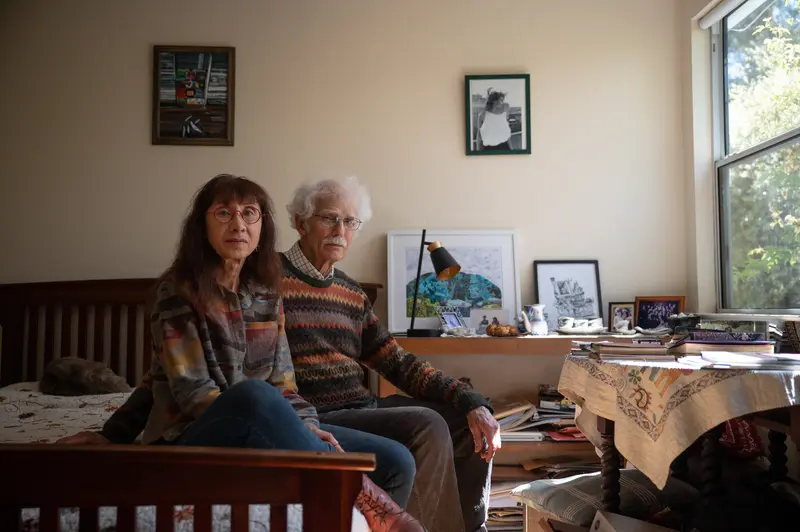
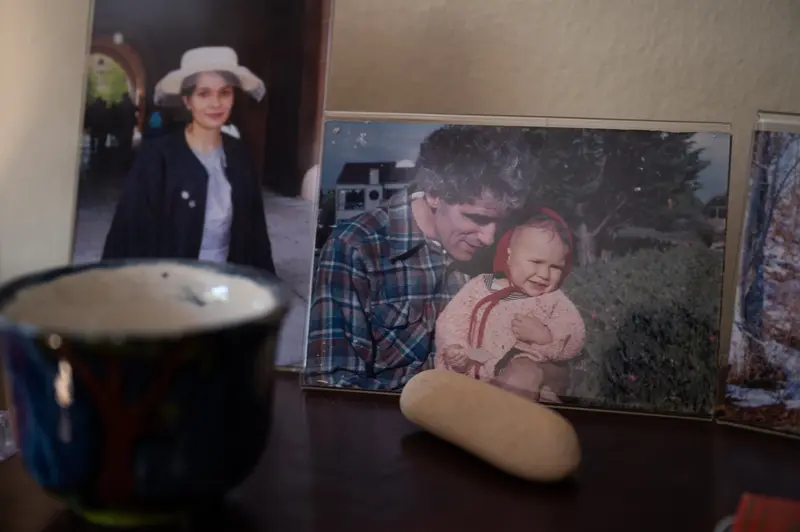
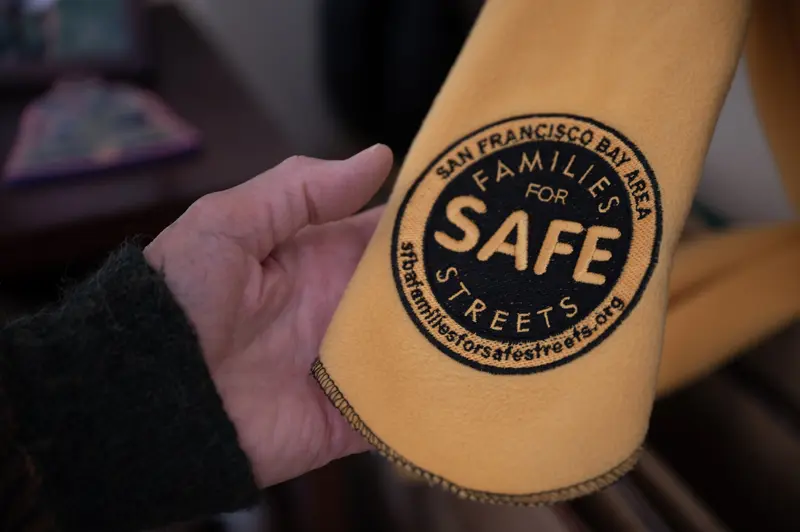
Stephen Bingham would like to see side guards on vehicles like the one that killed his daughter. It’s become something of a crusade for him.
But after learning about how the trucking industry was able to influence the DOT’s report, he’s become deeply skeptical of the federal safety apparatus.
“It’s hard to trust this process when the government’s been so disingenuous for so long,” said Bingham, whose dining room walls are adorned with art, including paintings done by his only child. “As long as industry profits come first, I fear this process will remain rigged.”
